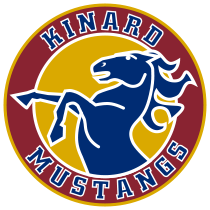Henry Ford said, “Whether you think you can or can’t, you’re right.” At Kinard, we believe all students can learn and will learn. We use data from state tests and our own formative and summative assessments to provide a baseline of student learning. The Colorado Academic Standards and Core Knowledge curriculum provide the content , and because there is such a diversity of learners at a middle school, teachers use a variety of research based teaching methodologies for instruction of content. For example, student choice, relevance, reflection, purposeful grouping, and technology are all tools that motivate student learning . Students then have higher engagement levels and ownership of their learning.
A Coherent, Cumulative, and Content-Specific Curriculum
The idea behind the Core Knowledge Sequence is simple and powerful: knowledge builds on knowledge. For the sake of academic excellence, greater fairness, and higher literacy, Core Knowledge provides a core curriculum that is coherent, cumulative, and content-specific in order to help children establish strong foundations of knowledge, grade by grade.
If all of our children are to be fully educated and participate equally in civic life, then we must provide each of them with the shared body of knowledge that makes literacy and communication possible. This concept, so central to the Core Knowledge Foundation’s goal of excellence and equity in education, takes shape in the Core Knowledge Sequence—a pioneering attempt to outline the specific core of shared knowledge that all children should learn in American schools.
The Core Knowledge Sequence is a detailed outline of specific content (and skills) taught in English/language arts, history, geography, mathematics, science, and the fine arts.
Academic Excellence
All the most successful educational systems in the world teach a common body of knowledge in the early grades. They do this because as both research and common sense demonstrate, we learn new knowledge by building on what we already know. It is important to begin building foundations of knowledge in the early grades because that is when children are most receptive, and because academic deficiencies in the first six grades can permanently impair the quality of later schooling.
Greater Fairness
Only by specifying the knowledge children should share can we guarantee equal access to that knowledge. In our current system, disadvantaged children especially suffer from low expectations that translate into watered down curricula. In schools using the Core Knowledge Sequence, however, disadvantaged children, like all children, are exposed to a coherent core of challenging, interesting knowledge. This knowledge not only provides a strong foundation for later learning, but also makes up common ground for communication in a diverse society.
Higher Literacy
Children create understanding by building on what they already know. They learn best when they are offered an engaging, challenging, and content-rich curriculum that builds and grows from year to year. As the heart of a school’s curriculum, the Core Knowledge Sequence provides a solid foundation for literacy and learning that promotes academic excellence for all learners, while remaining flexible enough to meet state and local standards. The Sequence is not a list of facts, events, and dates to be memorized. It is a guide to content from grade to grade, designed to encourage steady academic growth and progress as children construct their knowledge and develop literacy and critical thinking skills year after year.
Strong Foundations of Knowledge, Grade by Grade
The result of a lengthy process of research and consensus-building by the Core Knowledge Foundation, the Sequence is distinguished by its breadth and specificity. While most state or district standards and curricula provide general guidelines concerning skills students should obtain and master, they typically offer little help in deciding specific content. The specific content in the Sequence provides a solid foundation on which to build skills instruction. Moreover, because the Sequence builds knowledge systematically year by year, it helps prevent repetition and gaps in instruction that can result from vague curricular guidelines (for example, repeated units on “Pioneer Days” or “Saving the Rain Forest;” or inadequate attention to the Bill of Rights, or to the geography of Africa; et cetera).


